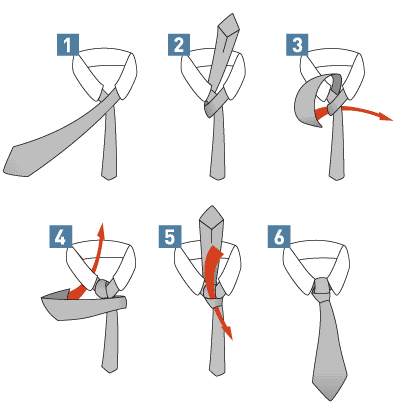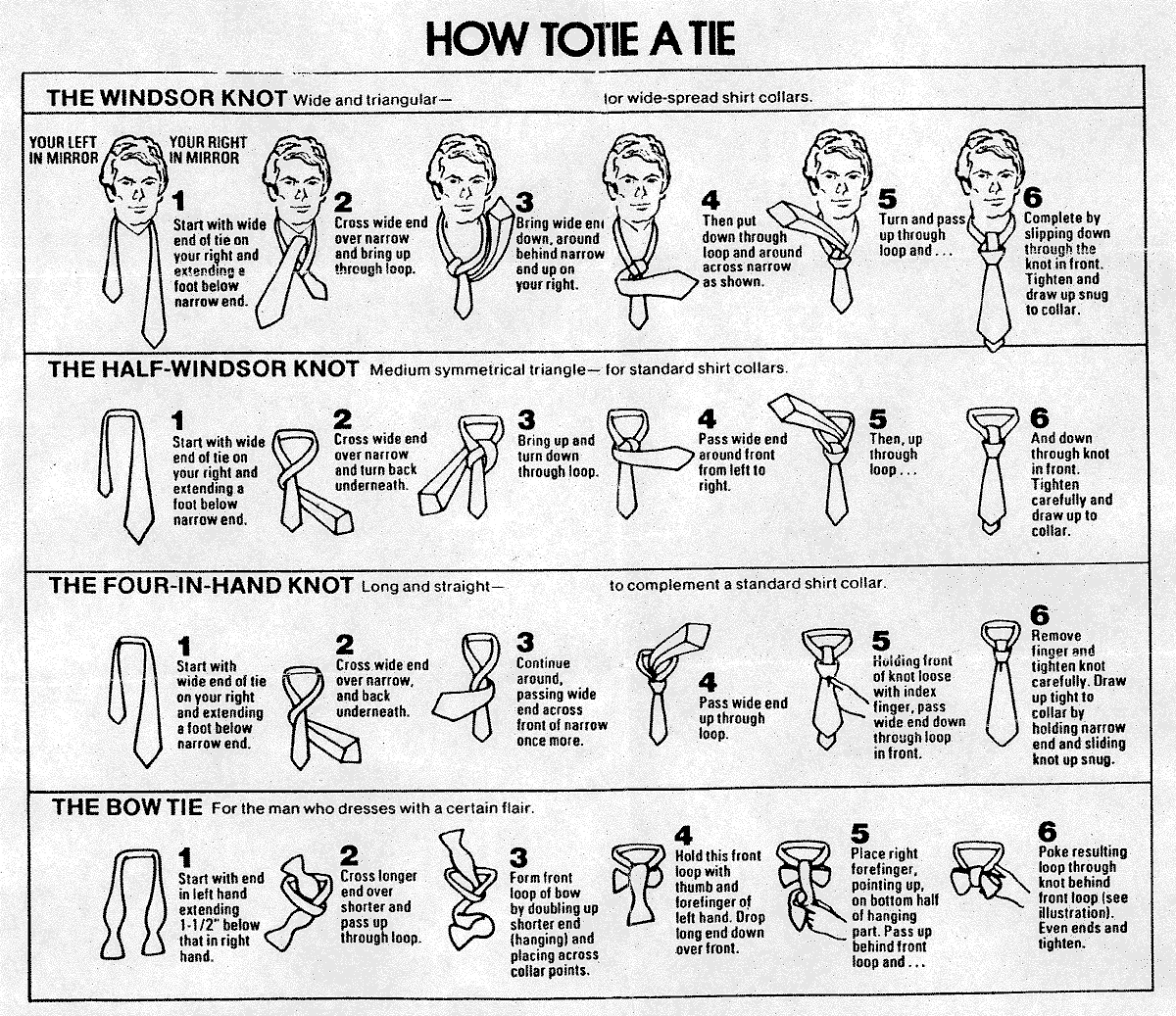The Skinner Knot, a Fresh Alternative to the Half-Windsor
by Will Skinner
March 2011
I recently stumbled across a "new" way to tie a tie.
In reality, since there are so few iterations of knots, there are no "new" ways to tie ties, but there are ways that nobody seems to utilize and are hence to this day unnamed and relatively unknown.
Before I describe the knot, I will explain what I hoped to achieve with it. For years, since I was a boy, I'd been using the Four-in-Hand knot because it was easy to tie, relatively small, and was asymmetrical. I've always liked the asymmetrical look in a tie knot because the symmetrical look always seems to be trying too hard. The asymmetrical knot has a dashing, cool, devil-may-care attitude that suits me better than a square, rigid, symmetrical one.
I also wanted a knot that would be "self-releasing." That is, when the small end is pulled out, the knot should fall apart without having to actually pry it apart like you're trying to undo a stuck shoelace.
And finally, since I was not blessed with much height, I often found the Four-in-Hand would leave so much material that the small end of a standard-length tie would hang down farther than the big end. So I needed a knot that would take up enough material that I would not have this problem.
To sum up, I needed a knot that:
1) is asymmetrical
2) is self-releasing
3) is moderately sized to take up enough material.
What I discovered was this knot:

Now, if you recognize that illustration, it's because I stole it off the 'net. All the sites that feature it incorrectly describe the depicted knot as a "half Windsor." In fact this knot is NOT a half-Windsor. A Windsor and half-Windsor are symmetrical knots--always have been, always will be. Even the variants of the half- and full-Windsor are always symmetrical. That is their defining feature. And this knot is definitely asymmetrical.
To compare, these are the appropriate ways to tie a half-Windsor and full-Windsor:

My knot, which I will now name, for my own ego pleasure, the "Skinner Knot," is listed as a no-name knot in the tie-tying bible "The 85 Ways to Tie a Tie." It is merely called "#10" (out of 85 of course). Its tying sequence is described thusly:
Li Co Li Ro Li Co T
(For a key as to how to decode these tying directions, see the Wikipedia article on the book here.)
The half-Windsor, and its variant, are described as:
Li Ro Ci Lo Ri Co T
Li Ro Ci Ro Li Co T
The key difference between the Skinner knot and the Half-Windsor is that the half-Windsor always, always, always starts out going to the left over the small end, and then goes back around behind to the right. Whereas my knot starts out going to the left over the small end but then goes up through the center and back to the left. This is a huge difference, because it allows the knot to be asymmetrical when it's finally done.
This knot is now my "go-to" knot for all occasions. It fits my style, my physique and makes standard-length and standard-width (3 1/4") ties look great on me.
I hope you'll try this knot and tell me what you think.
Contact the author at will@willskinner.com.
Copyright ©2011 Will Skinner All rights reserved.